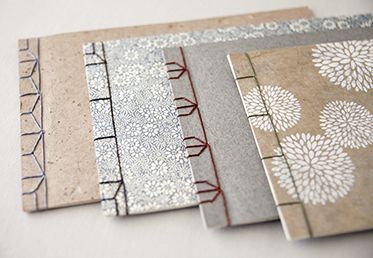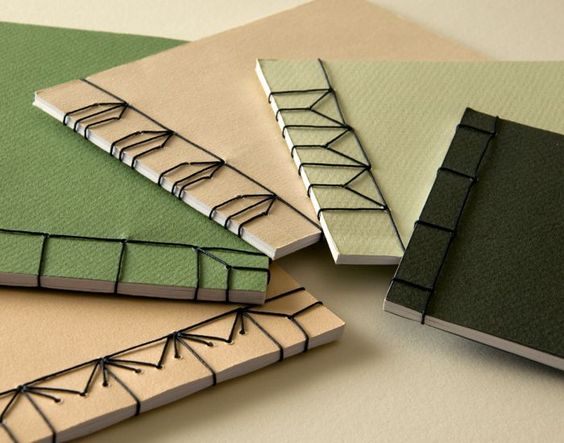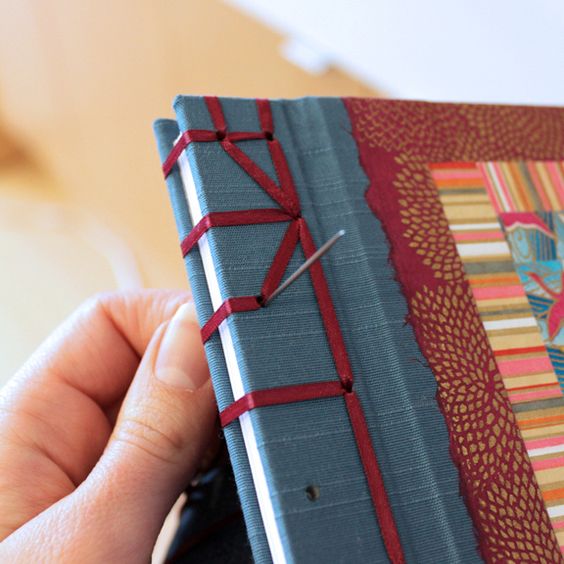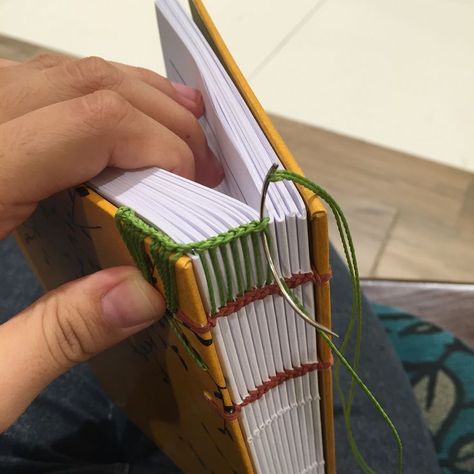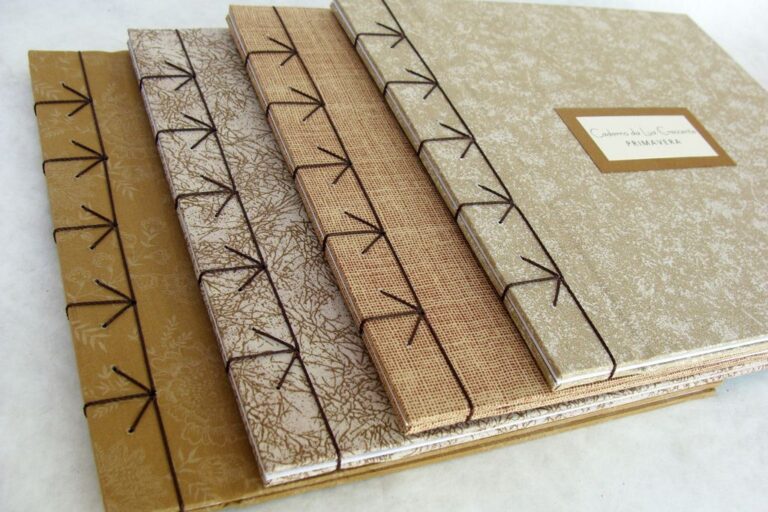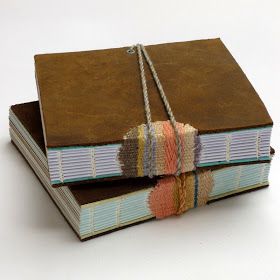Transforming Your Notes: Japanese Binding into Notebooks
The practice of taking notes is essential for learning and organizing information. The way we record our notes can make all the difference in our ability to absorb and retain knowledge. An approach that has gained prominence lately is Japanese binding applied to the creation of personalized notebooks. In this article, we’ll explore how this unique technique can transform your notes into something functional and aesthetically pleasing.
Table of Contents
What is Japanese Binding?
Japanese bookbinding is a traditional technique that dates back centuries. Originated in Japan, it is based on simplicity and elegance of design. Unlike conventional bindings, which often use glue or exposed stitching, Japanese binding stands out for its use of a combination of folds and ties that keep the pages together securely.
Advantages of Japanese Binding in Notebooks
1. Durability
The Japanese binding offers exceptional durability. The tying technique ensures that the pages are firmly secured, preventing them from becoming loose or lost over time. This is particularly important for frequently used notebooks, such as journals or study notebooks.
2. Flexibility
One of the biggest advantages of this technique is the flexibility it provides. Unlike traditional bindings, which can make it difficult to open the notebook completely, Japanese binding allows the pages to open flat, making writing and reading easier.
3. Personalization
The Japanese binding allows for a wide range of customization options. From choosing the paper used for the covers to selecting the colors for the binding lines, you can create a truly unique notebook that reflects your personality and style.
4. Aesthetics
The visual beauty of Japanese binding is undeniable. Tie lines create elegant patterns down the spine of the notebook, transforming it into a functional work of art. Not only does this make writing more enjoyable, but it can also spark your creativity.
Nowadays, Who Uses Japanese Bindings in Everyday Life?
Nowadays, Japanese bookbinding is not just a craft technique, but also a style choice that attracts people in different contexts and for different purposes. Here are some groups of people who can use Japanese binding in their daily lives:
- Artists and Designers : Many artists and designers appreciate Japanese bookbinding as a way to create personalized sketchbooks, art albums, and visual journals. The unique nature of Japanese binding allows for extensive experimentation with materials and design.
- Writers and Authors : Writers and authors can opt for notebooks with Japanese binding to write down ideas, draft texts, or keep diaries. The artistic aesthetic of binding can inspire creativity.
- Creative Professionals : Photographers, illustrators, graphic designers, and other creative professionals often use Japanese binding to create custom portfolios, photo albums, and project books.
- Business Professionals : Some business professionals adopt Japanese binding to create personalized meeting notebooks, notebooks or planners. This helps keep your information organized in a unique and attractive way.
- Students : Students can use Japanese-bound notebooks to take notes, create study notebooks or academic projects. The versatility of the technique allows them to customize their study materials.
- Teachers and Educators : Educators can choose to use personalized notebooks with Japanese binding to plan lessons, take important notes, and keep student records.
- People Who Value Handwriting : Those who enjoy handwriting and the tactile experience of writing on paper can choose notebooks with Japanese binding as a way to make the act of writing more meaningful and enjoyable.
- Gifts and Souvenirs : Japanese bookbinding is often used to create personalized gifts such as photo albums, recipe notebooks, travel journals, and other special items to give to friends and family.
- Craftsmen and Hobbyists : Japanese bookbinding is also a popular technique among crafters and hobbyists who enjoy creating their own notebooks, albums, and craft books as a form of creative expression.
- Stationery Collectors : Stationery collectors and writing supplies enthusiasts often appreciate Japanese-bound notebooks as part of their high-quality stationery collections.
In summary, Japanese binding is versatile and attractive to a variety of people in different areas and lifestyles. Its combination of aesthetic beauty and functionality makes it a popular choice for those who value art, handwriting, and creating personalized products.
Entering a Meeting with Personalized Notebook with Japanese Binding
Entering a meeting with a personalized notebook with Japanese binding can have several positive impacts, both in the professional environment and in interpersonal relationships. Here are some of the main impacts of using a personalized notebook with this binding:
- Professionalism and Attention to Detail: Choosing a personalized notebook shows that you care about presentation and value details. This reflects a high level of professionalism and attention to visual and aesthetic aspects, which can be appreciated by colleagues and superiors.
- Personalization and Individuality: Personalized notebook allows you to demonstrate your individuality and personal style. This can help create a more authentic and memorable image during the meeting.
- Impression of Dedication and Preparation: Walking into a meeting with a personalized notebook suggests that you are well prepared and dedicated to the meeting. This can instill confidence in your ability to run the meeting successfully.
- Icebreaker and Conversation Starter: A personalized notebook can serve as a starting point for more informal conversations and interactions. Colleagues can ask questions about the notebook, opening up opportunities to get to know each other better.
- Personal Marketing and Professional Promotion: If the notebook includes elements of your personal brand, such as logos or contact information, it can be a subtle personal promotion tool. This is particularly relevant if you are an entrepreneur or representing a company.
- Memorability: Japanese binding is an artisanal technique that creates a distinctive look. The uniqueness of the notebook can make you and your notes more memorable, which is useful in networking and business contexts.
- Creativity and Art: If you have artistic skills, a personalized notebook can be a form of creative expression and a way to highlight your creativity to others.
- Reflection and Organization: Using a notebook to take notes during the meeting demonstrates that you value organization and documenting important information.
- Potential to Strengthen Relationships: Gifting colleagues or business partners with personalized notebooks can also be an effective way to strengthen professional relationships.
It is important to note that the impact of entering a meeting with a personalized Japanese-bound notebook may vary depending on the context, organizational culture, and the personality of the people involved. However, in general, this practice is seen positively and can contribute to a more distinct and striking professional image.
Transforming Your Notes with Japanese Binding
Now that we understand the advantages of this binding technique, let’s explore how you can apply it to transform your notes into truly unique and meaningful notebooks.
1. Material Selection
Start by choosing the materials that will be used. Opt for high-quality paper for the inner pages as this will directly affect your writing experience. For the covers, you can choose from a variety of decorative papers or even create your own custom covers.
2. Page Preparation
Before starting the binding process, organize your pages and make any necessary folds. Make sure the margins are even for a clean, professional result.
3. Choosing the Lashing Pattern
One of the most exciting parts of Japanese binding is the choice of binding pattern. There are several options available, from the basic pattern to more intricate designs. Each pattern adds a unique touch to the finished notebook.
4. Tying Carefully
Follow the instructions for your chosen tying pattern carefully. Tying is a crucial step as it will determine how secure your pages will be. With patience and practice, you will master this technique.
5. Final Touches
After completing the binding, make sure all pages are aligned correctly. Make the necessary adjustments and finalize your notebook. Admire the craftsmanship you’ve done and be ready to start using your new custom pages.
Do it yourself
Here are the steps to transform your notes with Japanese binding:
Necessary materials:
- Notebook with loose pages or core ready for binding.
- Decorative paper or washi for the cover (optional).
- Binding threads or cords (can be nylon, linen, cotton, etc.).
- Binding needle.
- Ruler and pencil.
- Scissors.
- Cutting base (optional).
- Paper hole punch (to make holes in the sheets).
Steps:
- Notebook Preparation:
- If you’re starting with single pages, fold them in half to form the core of the notebook. If you already have a crumb ready, go to the next step.
- If you want a personalized cover, cut the decorative or washi paper to the size of the notebook cover and glue it to the cover.
- Hole Marking:
- Open the notebook and, with the ruler and pencil, mark where the holes for the seam will be made. Traditionally, four holes are made equally spaced along the fold of the notebook, but you can vary the number of holes and spacing according to your preference.
- Drilling the Leaves:
- Using the paper punch or a large needle, make holes at the marked points on the pages and cover of the notebook. Make sure the holes are aligned.
- Japanese Sewing:
- Cut a piece of thread long enough to wrap the notebook and tie the knots.
- Start sewing through the bottom hole, passing the needle from the inside of the notebook to the outside.
- Pass the needle through the holes, following the desired sewing pattern. There are several Japanese sewing techniques, such as “Kangxi” or “Noble”, which you can choose according to your taste.
- After finishing sewing, tie the threads in tight knots and cut off the excess.
- Finishing:
- Make sure the stitching is tight and the knots are secure.
- If desired, add bookmarks, ribbons, or decorations to your binding.
- Customization:
- Finally, you can add personal touches, such as stamps, drawings, or even a dedication on the first page of the notebook.
Now, you’ve transformed your simple notes into a personalized notebook with Japanese binding, adding a unique aesthetic and artisanal touch. Such a notebook will become not only a functional tool, but also a work of art that reflects your style and creativity.
Conclusion
Japanese binding offers a unique and captivating way to transform your notes into truly special notebooks. With its advantages of durability, flexibility, customization and aesthetics, this technique combines functionality with visual beauty. By following the steps of selecting materials, preparing the pages, choosing the binding pattern, careful tying, and finishing touches, you can create notebooks that are not only practical but also reflect your individuality.
Try Japanese binding and discover how it can take your note-taking experience to a whole new level. Transform your notes into functional works of art and start enjoying the benefits of this traditional and enchanting technique.

